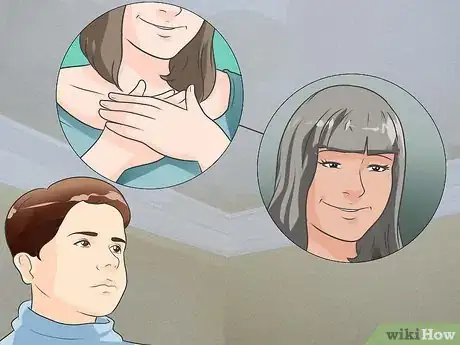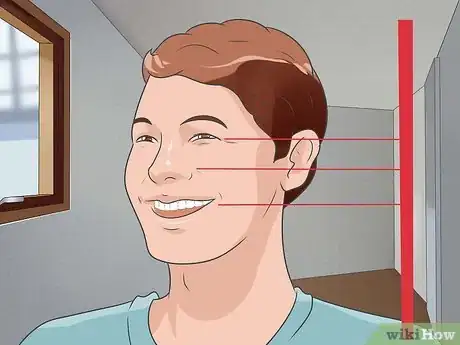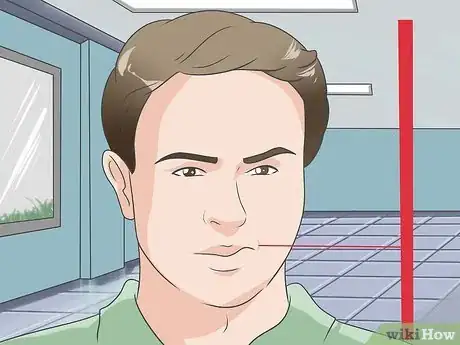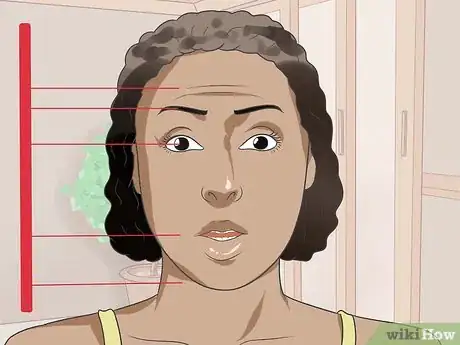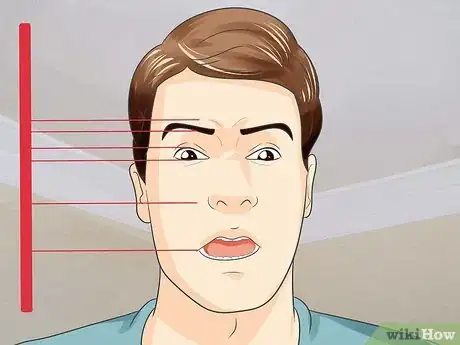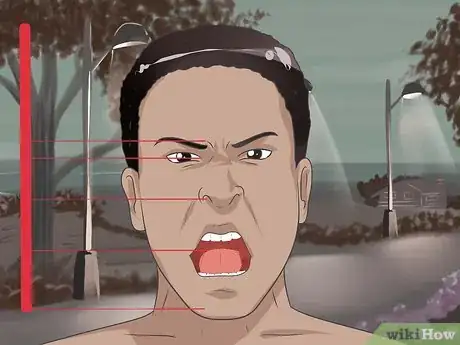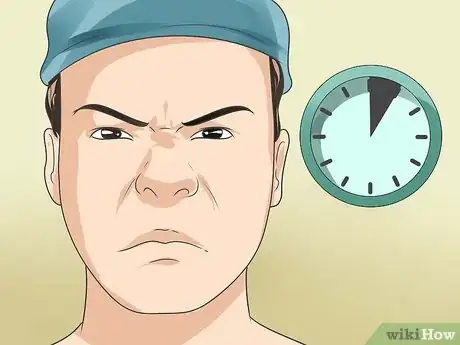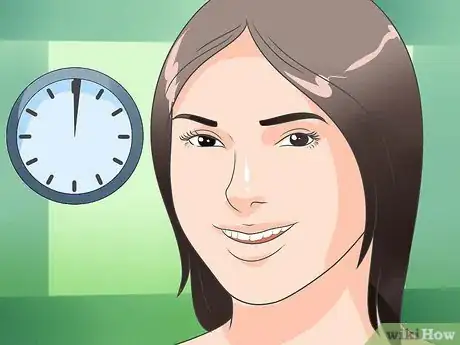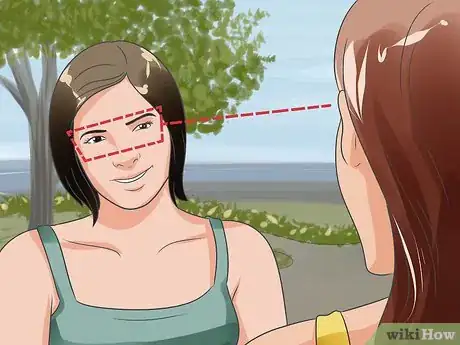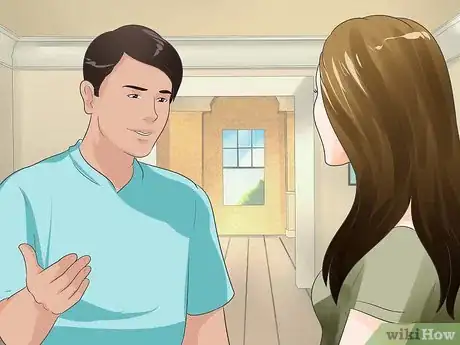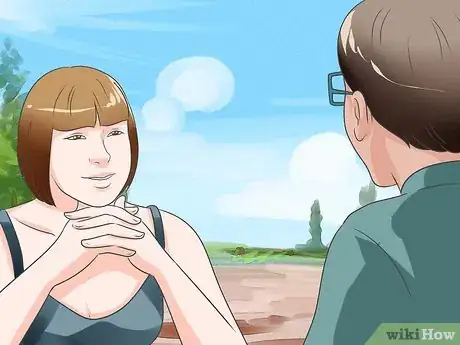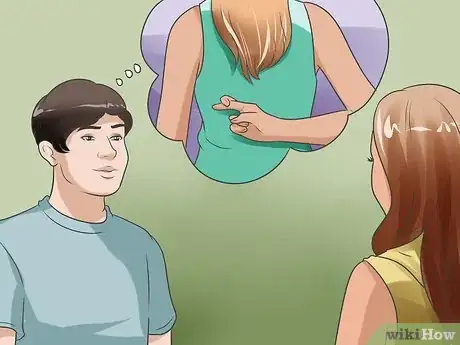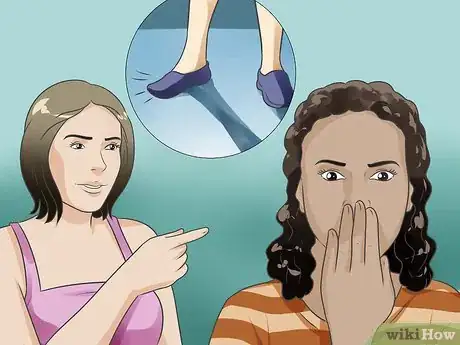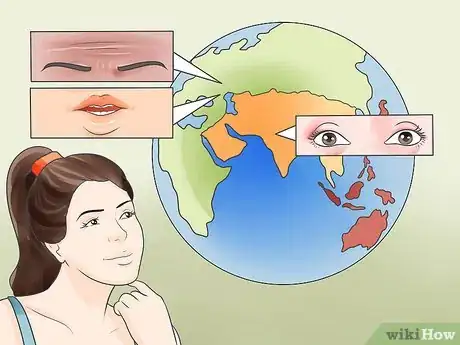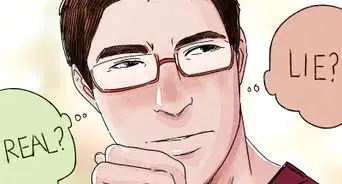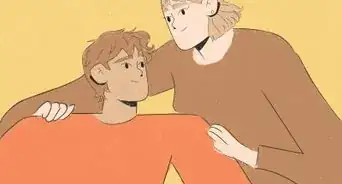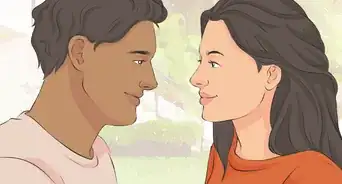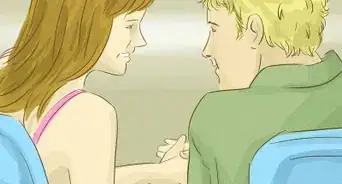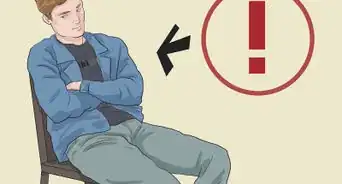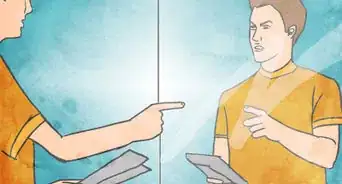wikiHow is a “wiki,” similar to Wikipedia, which means that many of our articles are co-written by multiple authors. To create this article, 23 people, some anonymous, worked to edit and improve it over time.
wikiHow marks an article as reader-approved once it receives enough positive feedback. This article received 11 testimonials and 100% of readers who voted found it helpful, earning it our reader-approved status.
This article has been viewed 408,824 times.
Learn more...
Reading people’s emotions is an important part of human communication. Recognizing facial expressions is an important way to get a sense of how someone is feeling. Beyond being able to simply recognize facial expressions, however, you should also understand how to communicate about how someone might be feeling. We advise that you learn the 7 major types of facial expressions, know when certain types of expressions are used, and develop your interpretations.
Steps
Learning the 7 Major Types of Facial Expressions
-
1Think about the link between emotions and expressions. Charles Darwin (1872) was the first to suggest that the facial expressions of certain emotions were universal. Studies in his time were inconclusive; however, research continued on the subject, and in the 1960s Silvan Tomkins conducted the first study demonstrating that facial expressions are in fact reliably associated certain emotional states.[1]
- Studies have shown that when emotions are spontaneously aroused, congenitally blind individuals produce the same facial expressions as sighted individuals do. In addition, facial expressions considered to be universal in humans have also been observed in non-human primates, particularly chimpanzees.
-
2Learn to read happiness. A face expressing happiness or joy will feature a smile (corners of the mouth drawn up and back) with some teeth exposed, and a wrinkle runs from the outer nose to the outer corners of the lip. The cheeks are raised, and the lower eyelids are tense or wrinkled. The narrowing of the eyelids causes “crow’s feet” wrinkles at the outer corners of the eyes.
- A face that is smiling but does not involve the muscles in the eyes indicates a fake smile or polite smile that is not actual happiness or joy.[2]
Advertisement -
3Identify sadness. A face showing sadness has the eyebrows drawn in and up, the skin below the eyebrows is triangulated with the inner corner up, and the corners of the lips are turned down. The jaw comes up and the bottom lip pouts out.
- Studies show that this emotion is the hardest expression to fake.[3]
-
4Learn to read contempt. A face showing contempt, or hate, has one corner of the mouth rising, like a sort of half-smile which is actually a sneer.[4]
-
5Identify disgust. A disgusted face has the eyebrows downcast, but the lower eyelid raised (causing the eyes to narrow), the cheeks are raised and the nose is scrunched. The upper lip is also raised or curled upward.[5]
-
6Watch for surprise. A surprised face features the eyebrows raised up and curved. The skin below the brow is stretched and there are horizontal wrinkles across the forehead. The eyelids are so wide open that the whites are showing above and/or below the pupils. The jaw is dropped and teeth are slightly parted, but there’s no stretching or tension of the mouth.[6]
-
7Notice fear. A face showing fear has raised eyebrows that are usually more flat, not curved. There are wrinkles in the forehead in the center between the brows, not across. The upper eyelids are raised, but lower eyelids are tense and drawn up, usually causing whites to show in the upper eye but not lower. The lips are usually tensed or drawn back, the mouth may be open and nostrils may be flared.[7]
-
8Identify anger. An angry face will show eyebrows that are lowered and drawn together, eyes staring hard or bulging, with vertical lines appearing between the brows and the lower eyelids tensed. Nostrils may be flared, and the mouth is either firmly pressed together with the lips drawn down at the corners, or in a square shape as if shouting. Also, the lower jaw juts out.[8]
Knowing When Different Expressions Are Used
-
1Watch for a macro expression. A macro expression is when we make a face that goes along with a certain feeling and it lasts anywhere between .5 and 4 seconds, and usually involves the entire face.
- These types of expressions are made when we are alone, or with close family or friends. They last longer than “microexpressions” because we are comfortable in our surroundings and don’t feel the need to conceal our emotions.
- Macroexpressions are relatively easy to see if you know what to look for in a person.[9]
-
2Notice a microexpression. A microexpression is a shortened version of an emotional facial expression. They go on and off the face in a fraction of a second, sometimes 1/30 of a second. They happen so fast that if you blink you can miss them.
- Microexpressions are usually the sign of concealed emotions. Sometimes the emotions are not necessarily being concealed, they are just rapidly processed.
- Research suggests that micro expressions happen because facial expressions cannot be completely voluntarily controlled, even if the person is trying to control their emotions. There are two neural pathways in the brain that mediates facial expressions, and they enter into a type of “tug of war” over the face when someone is in an intensely emotional situation but is trying to conceal their feelings.[10]
-
3Start looking for these expressions in others. Being able to read facial expressions benefits people in many different professions, especially those who work with the public, such as health professionals, teachers, researchers, and business people, as well as anyone interested in improving their personal relationships.
- When having a conversation with someone, see if you can first establish a baseline in their face. The baseline is their normal facial muscle activity when feeling little or no emotion. Then, throughout the course of the conversation, look for macro- or microexpressions and see how well these fit with what the person is saying.[11]
Developing Your Interpretations
-
1Confirm your observations carefully. Keep in mind that being able to read facial expressions does not automatically reveal what caused the emotion, only that the emotion may be occurring.
- Don’t assume and ask questions based on your assumption. You could ask, “Would you like to talk more about that?” if you suspect that someone is concealing their emotions.
- Asking “Are you angry?” or “Are you sad?” to someone you don’t know very well or someone you have a professional relationship with may be too intrusive, and could upset or aggravate the person. You should be sure that someone feels very comfortable with you before asking direct questions about their emotions.
- If you do know someone well, it may be fun and helpful to ask directly about their feelings if you suspect a certain emotion. It could be a kind of game. You should communicate with them first that you’re learning about reading facial expressions and it would be helpful for you to practice with them sometimes.[12]
-
2Be patient. Being able to read facial expressions doesn’t give you authority over someone’s feelings, and you should not assume you know exactly how they are feeling without some more communication.
- For instance, you would not want to give someone bad news, like that they did not get a promotion that they were hoping for, and then ask directly, “Are you angry?” because you saw an angry microexpression. Saying, “I’m open to talking more about this anytime you’d like to” would be a much better response if you suspect that they are angry.
- Give people time to express their feelings when they are ready to. People have many different ways of communicating. Just because you believe someone is feeling a certain way, does not mean they are necessarily ready to discuss it with you.[13]
-
3Don’t assume someone is lying. If someones’s microexpression contradicts what they are saying, it is possible that they are lying. People do tend to get emotional when lying for a variety of reasons: fear of getting caught, shame, or even enjoyment in lying about something they want to get away with.
- Unless you are a professional trained in being able to detect lying, such as a law enforcement agent, assuming that someone is lying and then acting on that assumption may damage your relationship with that person.
- People who work in law enforcement, such as FBI and CIA agents, often spend years in training to learn to read people’s body language; not only their facial expressions but also their voice, gestures, gaze, and postures. Always use caution when reading facial expressions unless you are a professional.[14]
-
4Look for possible signs of lying. While you can’t rely on facial expressions alone to know for sure that someone is lying, there are some other signs that are mostly proven to signify lying, and if you notice them along with inconsistent facial expressions, then someone may be hiding the truth. The other signs are:
- a sudden jerk or tilt of the head,
- increased shallow breathing,
- extreme rigidness,
- repetitiveness (repeating certain words or phrases)
- over-compensating (giving too much information)
- covering the mouth or other vulnerable areas such as the throat, chest, or abdomen
- shuffling of the feet
- difficulty in speaking
- abnormal eye contact – either complete lack of it, rapid blinking, or extended eye contact with no blinking
- pointing
Did You Know? Disabilities such as autism and ADHD can impact body language, habits, and skills. Some of the "signs of lying" listed here are normal behavior for people with certain disabilities. Keep their baseline behavior in mind.
-
5Keep in mind cultural differences. While facial expressions have been deemed the “universal language of emotion,” different cultures may actually interpret happy, sad, and angry facial expression in unique ways.
- According to studies, Asian cultures rely more on the eyes when interpreting a facial expression, but Western cultures rely more on the eyebrows and mouth. This can sometimes lead to missed cues or misinterpreted signals during cross-cultural communication. Furthermore, it has been suggested that Asian cultures actually associate different fundamental emotions, such as pride and shame, with certain expressions instead of the seven major Western emotions.[15]
Expert Q&A
-
QuestionHow do you know if a girl likes you secretly?
 Elvina Lui, MFTElvina Lui is a Licensed Marriage and Family Therapist specializing in relationship counseling based in the San Francisco Bay Area. Elvina received her Masters in Counseling from Western Seminary in 2007 and trained under the Asian Family Institute in San Francisco and the New Life Community Services in Santa Cruz. She has over 13 years of counseling experience and is trained in the harm reduction model.
Elvina Lui, MFTElvina Lui is a Licensed Marriage and Family Therapist specializing in relationship counseling based in the San Francisco Bay Area. Elvina received her Masters in Counseling from Western Seminary in 2007 and trained under the Asian Family Institute in San Francisco and the New Life Community Services in Santa Cruz. She has over 13 years of counseling experience and is trained in the harm reduction model.
Marriage & Family Therapist She might stand a little closer to you and/or have relaxed body language (e.g., uncrossed arms, loose shoulders).
She might stand a little closer to you and/or have relaxed body language (e.g., uncrossed arms, loose shoulders). -
QuestionHow accurate are the readings? Do I have to be a pro?
 Community AnswerThese are just the basics, so you don't have to be a pro. You can learn this and improvise, or go for training to become a pro.
Community AnswerThese are just the basics, so you don't have to be a pro. You can learn this and improvise, or go for training to become a pro. -
QuestionDoes these expressions differ from person to person based on MBTI?
 Community AnswerGenerally, no. There are some studies suggesting that sociopaths and some other people with personality disorders may react slightly different. Sociopaths tend to be less pronounced in their expressions according to these studies, but there is no conclusive evidence. As for introverted and extroverted persons, there may be minor but negligible differences. The only thing that can be said for sure is that virtually all people share the same emotional responses, though some may be better at hiding them due to certain personality traits.
Community AnswerGenerally, no. There are some studies suggesting that sociopaths and some other people with personality disorders may react slightly different. Sociopaths tend to be less pronounced in their expressions according to these studies, but there is no conclusive evidence. As for introverted and extroverted persons, there may be minor but negligible differences. The only thing that can be said for sure is that virtually all people share the same emotional responses, though some may be better at hiding them due to certain personality traits.
References
- ↑ http://www.apa.org/science/about/psa/2011/05/facial-expressions.aspx
- ↑ http://www.scienceofpeople.com/2013/09/guide-reading-microexpressions/
- ↑ http://www.scienceofpeople.com/2013/09/guide-reading-microexpressions/
- ↑ http://www.bodylanguageexpert.co.uk/study-facial-expressions.html
- ↑ http://www.scienceofpeople.com/2013/09/guide-reading-microexpressions/
- ↑ http://www.scienceofpeople.com/2013/09/guide-reading-microexpressions/
- ↑ http://www.bodylanguageexpert.co.uk/study-facial-expressions.html
- ↑ http://www.scienceofpeople.com/2013/09/guide-reading-microexpressions/
- ↑ http://www.apa.org/science/about/psa/2011/05/facial-expressions.aspx
- ↑ http://www.apa.org/science/about/psa/2011/05/facial-expressions.aspx
- ↑ http://www.apa.org/science/about/psa/2011/05/facial-expressions.aspx
- ↑ http://www.cio.com/article/2439298/staff-management/how-to-be-a-mind-reader--the-art-of-deciphering-body-language.html
- ↑ http://www.cio.com/article/2439298/staff-management/how-to-be-a-mind-reader--the-art-of-deciphering-body-language.html
- ↑ http://www.apa.org/science/about/psa/2011/05/facial-expressions.aspx
- ↑ http://www.apa.org/news/press/releases/2011/09/facial-expressions.aspx
About This Article
To easily read faces and facial expressions, identify the 7 major expressions, including happiness, sadness, contempt, disgust, surprise, fear, and anger. For example, happiness features a smile with some teeth exposed and a wrinkle running from the outer nose to the outer corners of the lip. When talking to people, try to identify their major expressions, and then you can look for microexpressions, which typically last a fraction of a second and reveal concealed emotions. For tips on how to read macro expressions, keep reading!
